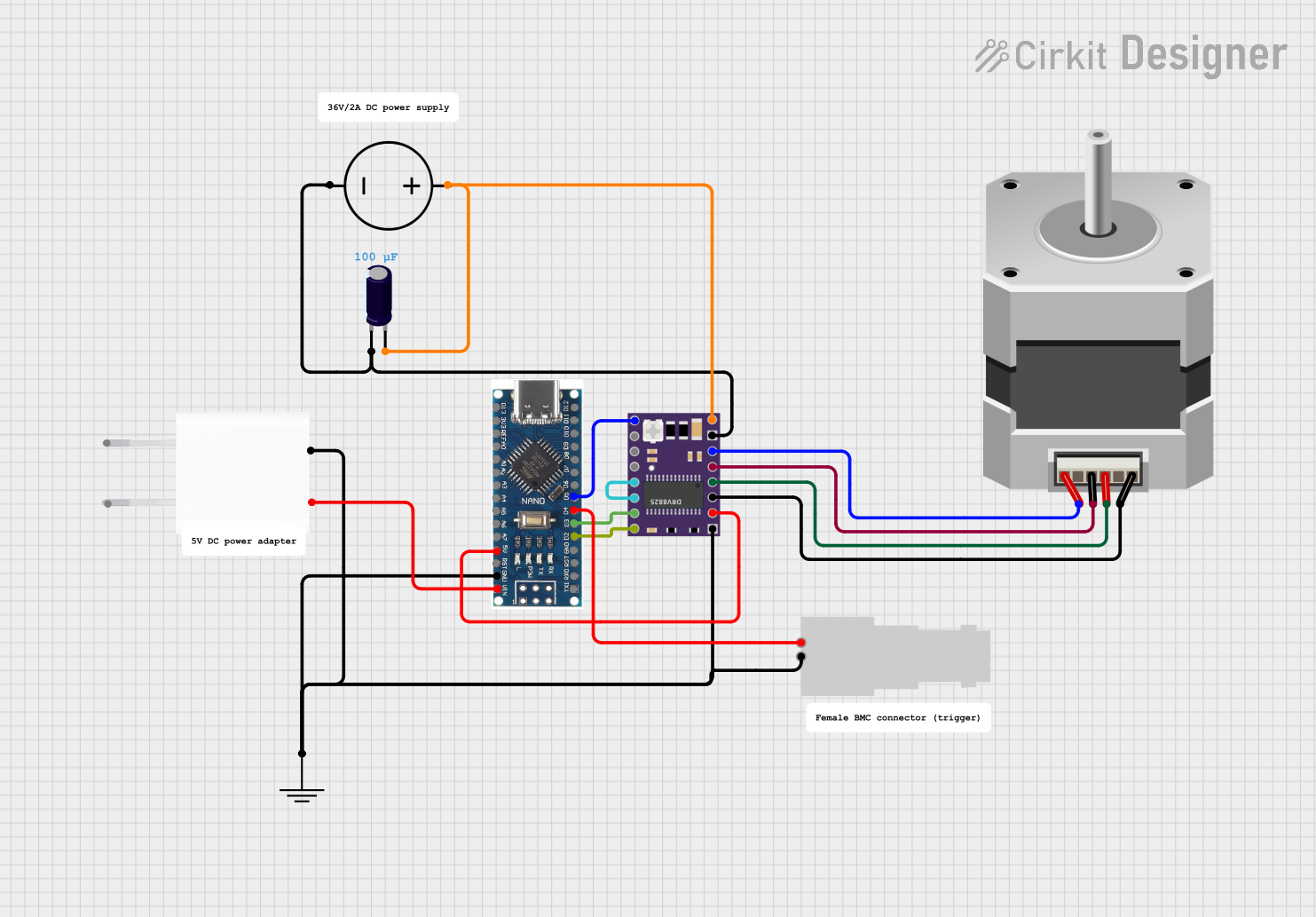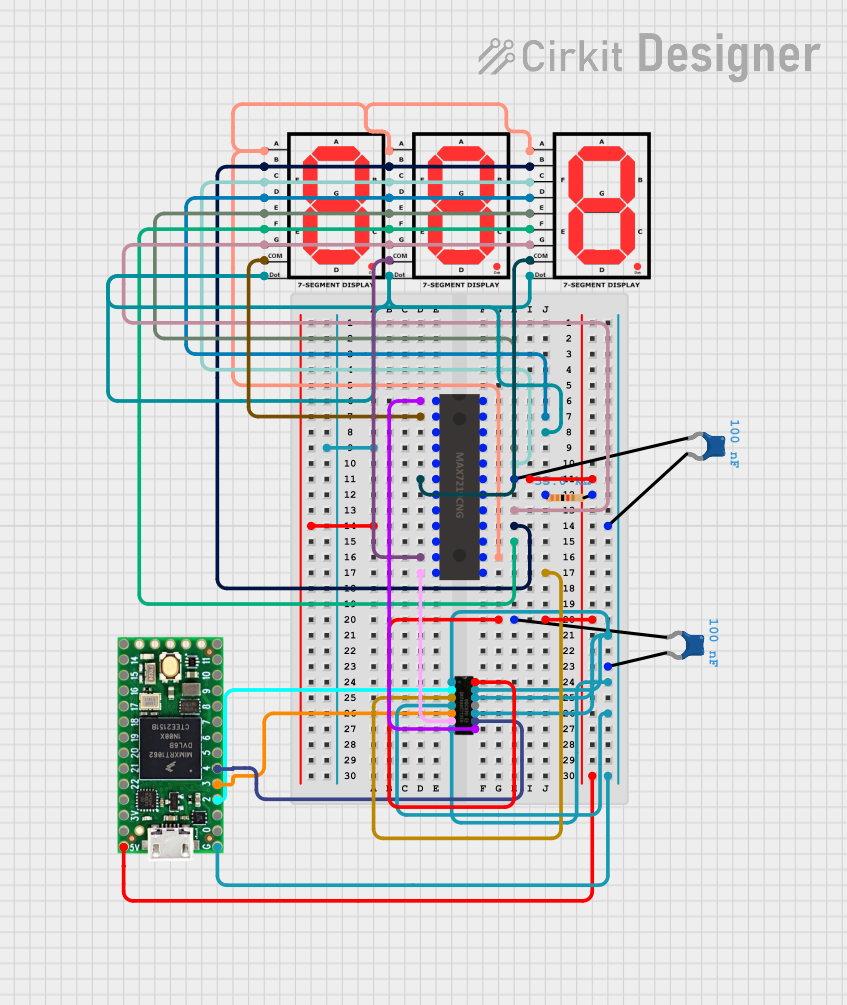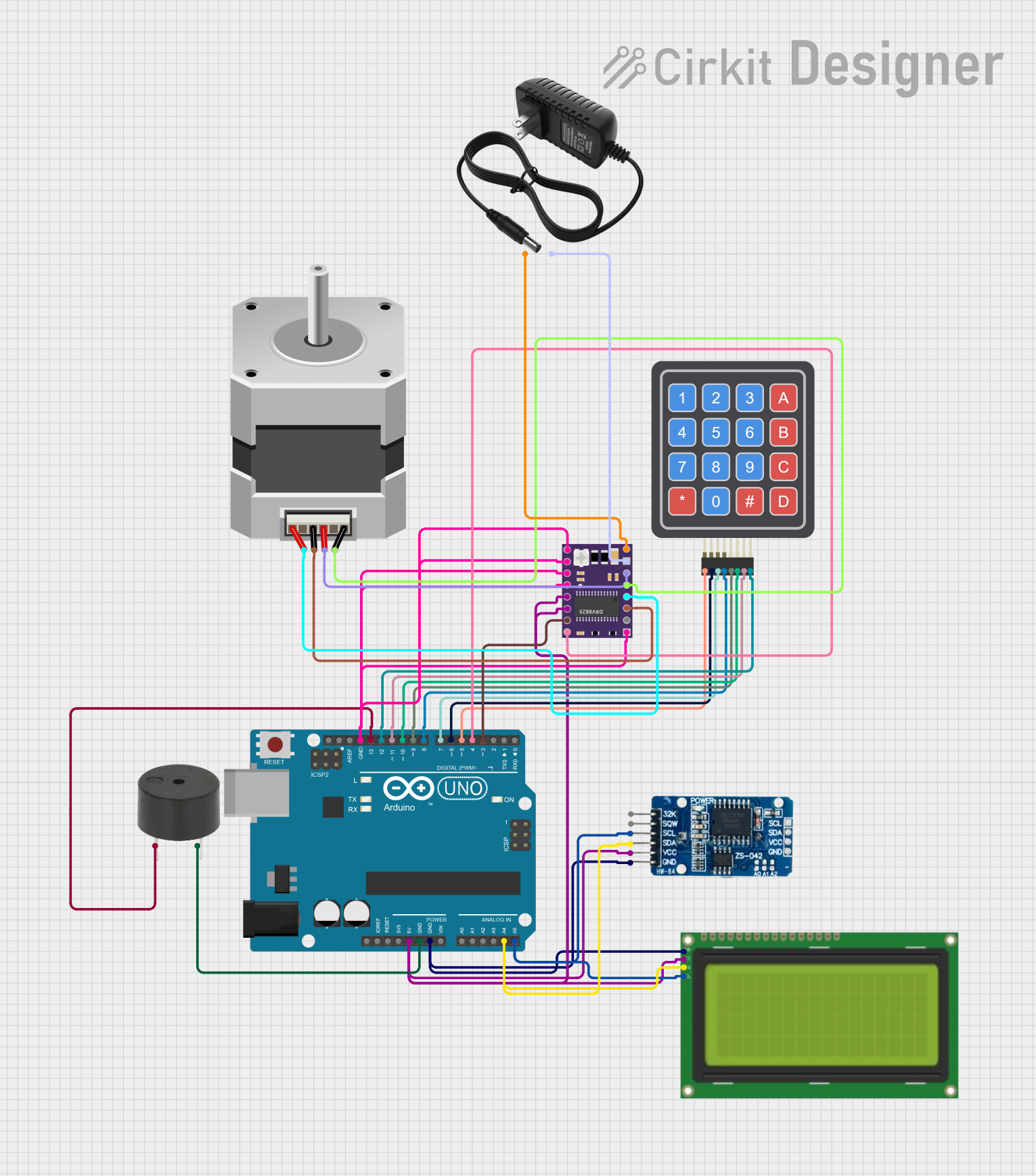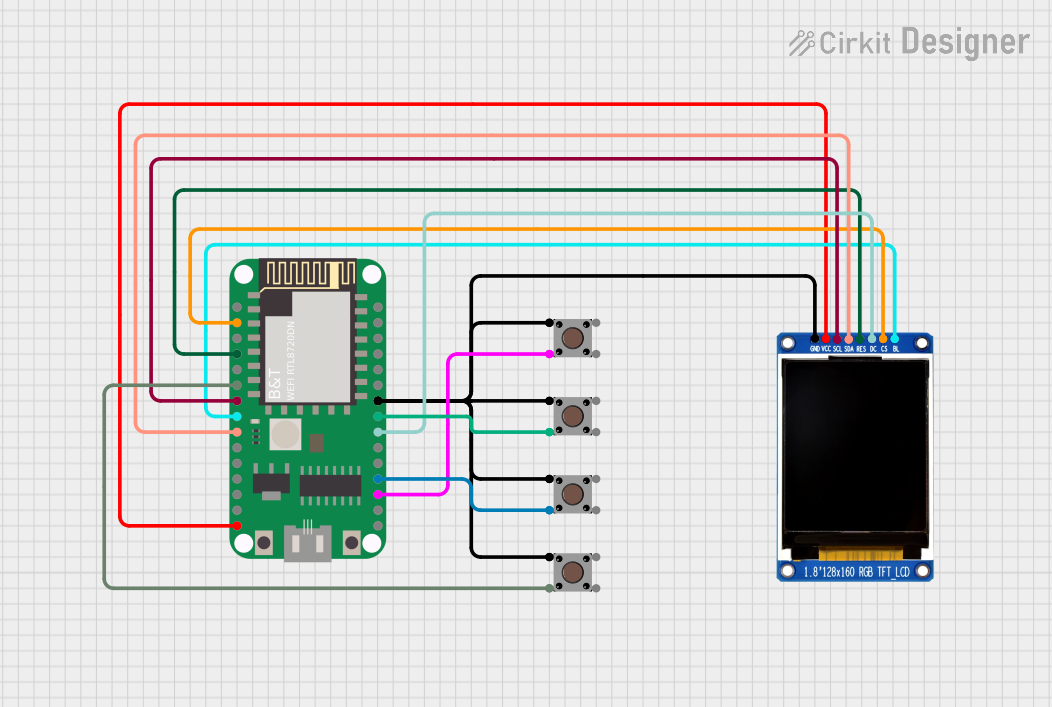
How to Use DRV 8825: Examples, Pinouts, and Specs

 Design with DRV 8825 in Cirkit Designer
Design with DRV 8825 in Cirkit DesignerIntroduction
The DRV8825 is a stepper motor driver IC manufactured by Texas Instruments, designed to provide precise control of stepper motors. It supports adjustable current control, microstepping (up to 1/32 steps), and includes built-in protection features such as overcurrent, thermal shutdown, and undervoltage lockout. The DRV8825 is widely used in robotics, 3D printers, CNC machines, and other automation systems requiring accurate motor control.
Explore Projects Built with DRV 8825

 Open Project in Cirkit Designer
Open Project in Cirkit Designer
 Open Project in Cirkit Designer
Open Project in Cirkit Designer
 Open Project in Cirkit Designer
Open Project in Cirkit Designer
 Open Project in Cirkit Designer
Open Project in Cirkit DesignerExplore Projects Built with DRV 8825

 Open Project in Cirkit Designer
Open Project in Cirkit Designer
 Open Project in Cirkit Designer
Open Project in Cirkit Designer
 Open Project in Cirkit Designer
Open Project in Cirkit Designer
 Open Project in Cirkit Designer
Open Project in Cirkit DesignerCommon Applications
- 3D printers and CNC machines
- Robotics and automation systems
- Camera sliders and gimbals
- Precision positioning systems
- DIY electronics projects
Technical Specifications
The DRV8825 is a versatile and robust stepper motor driver. Below are its key technical details:
| Parameter | Value |
|---|---|
| Operating Voltage (VMOT) | 8.2V to 45V |
| Logic Voltage (VIO) | 3.3V or 5V |
| Maximum Output Current | 2.5A per coil (with sufficient cooling) |
| Microstepping Modes | Full, 1/2, 1/4, 1/8, 1/16, 1/32 |
| Step Frequency | Up to 250 kHz |
| Thermal Shutdown Protection | Yes |
| Overcurrent Protection | Yes |
| Undervoltage Lockout | Yes |
Pin Configuration and Descriptions
The DRV8825 is typically available in a 28-pin HTSSOP package or as a breakout module. Below is the pinout for the breakout module:
| Pin Name | Type | Description |
|---|---|---|
| VMOT | Power Input | Motor power supply (8.2V to 45V). Connect a capacitor (e.g., 100 µF) across VMOT and GND. |
| GND | Power Ground | Ground connection for motor power supply. |
| VDD | Power Input | Logic voltage supply (3.3V or 5V). |
| DIR | Digital Input | Direction control input. High or low determines motor rotation direction. |
| STEP | Digital Input | Step pulse input. Each pulse advances the motor by one step. |
| ENABLE | Digital Input | Enables or disables the motor driver. Low = enabled, High = disabled. |
| MS1, MS2, MS3 | Digital Inputs | Microstepping mode selection pins. See table below for configuration. |
| FAULT | Digital Output | Fault indicator. Low when a fault condition occurs (e.g., overcurrent). |
| AOUT1, AOUT2 | Motor Outputs | Outputs for one motor coil (A). |
| BOUT1, BOUT2 | Motor Outputs | Outputs for the other motor coil (B). |
| SLEEP | Digital Input | Puts the driver into low-power sleep mode when pulled low. |
| RESET | Digital Input | Resets the internal logic when pulled low. |
Microstepping Configuration
The microstepping mode is configured using the MS1, MS2, and MS3 pins as shown below:
| MS1 | MS2 | MS3 | Microstepping Mode |
|---|---|---|---|
| Low | Low | Low | Full Step |
| High | Low | Low | 1/2 Step |
| Low | High | Low | 1/4 Step |
| High | High | Low | 1/8 Step |
| Low | Low | High | 1/16 Step |
| High | Low | High | 1/32 Step |
Usage Instructions
Connecting the DRV8825
- Power Supply: Connect VMOT to a power supply (8.2V to 45V) and GND to ground. Add a decoupling capacitor (e.g., 100 µF) across VMOT and GND to stabilize the power supply.
- Motor Connections: Connect the stepper motor coils to AOUT1, AOUT2, BOUT1, and BOUT2. Ensure the correct pairing of motor wires.
- Logic Connections: Connect VDD to the logic voltage (3.3V or 5V) and GND to the logic ground.
- Control Pins: Connect STEP, DIR, ENABLE, and microstepping pins (MS1, MS2, MS3) to your microcontroller or control circuit.
Adjusting Current Limit
To prevent overheating or overdriving the motor, adjust the current limit using the onboard potentiometer:
- Measure the reference voltage (VREF) on the breakout board.
- Use the formula:
Current Limit = VREF × 2 (for most DRV8825 modules).
For example, if VREF = 0.5V, the current limit is 1A. - Turn the potentiometer clockwise to increase the current limit or counterclockwise to decrease it.
Example Arduino Code
Below is an example of how to control a stepper motor using the DRV8825 and an Arduino UNO:
// Define control pins
#define STEP_PIN 3 // Connect to STEP pin on DRV8825
#define DIR_PIN 4 // Connect to DIR pin on DRV8825
void setup() {
pinMode(STEP_PIN, OUTPUT); // Set STEP pin as output
pinMode(DIR_PIN, OUTPUT); // Set DIR pin as output
digitalWrite(DIR_PIN, HIGH); // Set initial direction
}
void loop() {
// Generate step pulses
digitalWrite(STEP_PIN, HIGH); // Step pulse HIGH
delayMicroseconds(500); // Wait 500 microseconds
digitalWrite(STEP_PIN, LOW); // Step pulse LOW
delayMicroseconds(500); // Wait 500 microseconds
}
Best Practices
- Use a heatsink or active cooling if driving motors at high currents.
- Avoid connecting or disconnecting the motor while the driver is powered to prevent damage.
- Ensure proper decoupling capacitors are in place to avoid voltage spikes.
Troubleshooting and FAQs
Common Issues
Motor Not Moving:
- Check the power supply connections and ensure VMOT and VDD are correctly powered.
- Verify the STEP pin is receiving pulses from the microcontroller.
- Ensure the motor coils are correctly connected to the driver.
Overheating:
- Reduce the current limit using the potentiometer.
- Add a heatsink or active cooling to the driver.
Fault Indicator (FAULT Pin Low):
- Check for overcurrent or thermal shutdown conditions.
- Ensure the motor is not drawing more current than the driver can handle.
Erratic Motor Movement:
- Verify the microstepping mode configuration (MS1, MS2, MS3).
- Check for loose or incorrect wiring.
FAQs
Q: Can I use the DRV8825 with a 12V power supply?
A: Yes, the DRV8825 supports motor power supply voltages from 8.2V to 45V, so 12V is within the acceptable range.
Q: How do I know the correct current limit for my motor?
A: Refer to your motor's datasheet for its rated current per phase. Set the current limit on the DRV8825 to match or slightly below this value.
Q: Can I use the DRV8825 with a unipolar stepper motor?
A: The DRV8825 is designed for bipolar stepper motors. However, you can use a unipolar motor in bipolar mode by ignoring the center tap wires.
Q: What happens if I exceed the current limit?
A: The DRV8825 includes overcurrent protection and will shut down to prevent damage. However, prolonged overcurrent conditions can still cause overheating.
By following this documentation, you can effectively use the DRV8825 stepper motor driver in your projects.